East West Lifestyle
Nourishing Healthy Life Options in L.A.’s Food Desert
By Melody Yuan
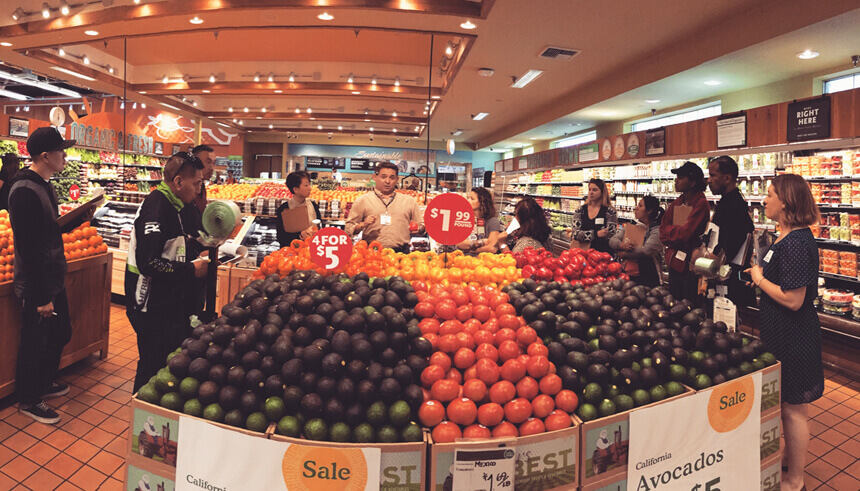
The entrepreneurs and policy workers who are making a healthy impact on Los Angeles.
“There’s honestly not enough time in the day to travel to a grocery store with fresh produce, and then come home to cook for my family of eight,” says South L.A. resident Mildred Z., who has asked not to have her full name disclosed. “People always tell me that I need to have a healthier lifestyle, but try doing that when you’ve got two jobs, kids, and the closest grocery store is 35 minutes away with traffic.”
This sentiment seems to resonate across many living in food deserts who are making ends meet, juggling multiple responsibilities, and trying to adopt a healthier lifestyle.
Food deserts across the nation, especially in South Los Angeles, are not a new development. According to DoSomething.org, 23.5 million people live in food deserts, which are often low-income urban areas where there is little to no access to grocery stores with fresh produce. The United States Department of Agriculture (USDA) maps food deserts based on income and grocery store accessibility in neighborhoods. Data has shown that areas with less access to fresh produce leads to an increase in obesity, not to mention that those with lower incomes tend to work longer hours and purchase more fast food. This behavior discourages supermarkets from opening in low-income neighborhoods for fear of losing money.
This recurring chain reaction needs to be broken—but how? We spoke to the Los Angeles Food Policy Council and business entrepreneurs who are addressing the problem head-on and building initiatives to help bring nourishment to food deserts.
Food, factors and finding balance
How did food deserts come to exist? According to Daniel Rizik-Baer, project director of the Healthy Neighborhood Market Network for the Los Angeles Food Policy Council, it’s important to look at the historical context. “These issues didn’t just emerge out of nowhere. You could trace it back to the 20th century to look at the beginning of urbanization and suburbanization,” he says. “The flight of affluent populations going into suburbs meant that most of the grocery stores left with them, leaving areas in Los Angeles that we know today, like Compton and MacArthur Park, with little access.”
Corner stores took the helm of providing food to many of these urban neighborhoods after the flight, but with grocery stores consolidating and operating on a larger footprint over the years, alongside a burgeoning agriculture industry, local mom-and-pops stores have found it increasingly difficult to afford and access fresh produce items to sell.
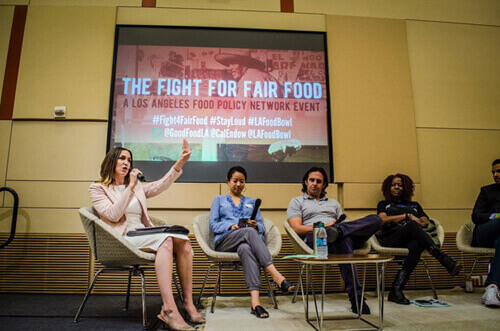
“Data shows that people want grocery items beyond snack and fast food options in their neighborhoods.”
Rizik-Baer claims that data shows that grocery leakage, a term used to quantify the people who have to leave their neighborhoods to find a grocery store, demonstrates a direct need for people in low-income areas to have access to stores carrying healthy foods. “This data shows that people want grocery items beyond snack and fast food options in their neighborhoods. They just have to leave in order to get it,” he says. Coupled with the fact that most public transportation services are used by residents in these low-income areas, “not only do they have to travel long distances to get to a grocery store, they then have to carry the items back, which is literally and figuratively a much heavier lift than someone who can just jump into a car.”
And this is only the tip of the food access iceberg. “Lack of access to healthy foods is a justice issue that extends beyond just food,” says Rizik-Baer. “At the LA Food Policy Council, we understand that people are unable to have healthy produce not because they don’t want them or that they’re making the wrong decisions. It’s usually because they simply don’t have access to them, it’s unaffordable, and, even if it is available, oftentimes they’re not of high quality.”
Entrepreneurial solutions
Some entrepreneurs are trying to address these needs. Sam Polk, a former hedge fund trader, co-founded Everytable, a business that sells fresh prepared food at a sliding scale—prices are lower in food desert neighborhoods and higher in wealthier ones. Everytable understands that many low-income families work long hours, leaving little time for cooking, let alone shopping for fresh produce. As a solution, Everytable has adopted the concept of fast food and applies it to fresh food, making affordable, good food for on the go. You can order things like a Smoked Salmon Bibimbap, Harvest Stuffed Squash, and Ensalada Fresca with Chicken, all for the same price of a Big Mac meal.
At the same time, to help people make a permanent change to the way they approach food at home, he founded Groceryships, a nonprofit that focuses on addressing food-related health problems and educates family food providers to make healthier choices.
"The conversation we should really be having is how food choices come from a historical and emotional place for us, and how it affects the outcome of so many things in our lives."
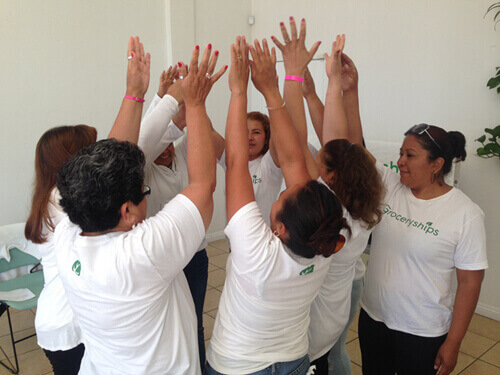
“When people talk about healthy eating, they’re often just teaching people that it’s better to eat fruits and vegetables,” says Dana Rizer, CEO of Groceryships. “The conversation we should really be having is how food choices come from a historical and emotional place for us, and how it affects the outcome of so many things in our lives.”
Debunking myths about healthy eating
Eating healthy is expensive: with a higher cost of living and preexisting notions that organic produce is expensive, most low-income individuals and families give up before trying. “We’re really trying to debunk some myths on healthy eating,” says Rizer. “We need to categorize what’s important when talking about the economics of food.”
For example, while a McDonald’s meal may only cost $4—which may be cheaper than a bag of groceries—but Rizer points out that consumers need to look at the nutritional aspect to analyze what nutrients are really being paid for. “With fast food, you pretty much just see calories and fats. You’re essentially paying for a whole lot of nothing,” she says. “Now, counter that with a giant pot of lentil or vegetable soup. You can have a meal every single day from that pot and it’ll cost you 80 cents, not to mention it has nutrients like fiber that will help you feel full and is a much healthier option.”
Taking a deeper look at Groceryships
Using a three-pronged approach, Groceryships uses a 20-week program that trains participants to lead healthier lives. The first component is the educational piece, where participants learn how to eat healthily, which includes understanding today’s food ecosystem to something granular like learning how to read a food label. The second component is a hands-on approach, where participants learn how to make easy recipes with affordable foods that focuses on building a repertoire around healthy food that’s exciting and not just a salad. The final component addresses access to these healthy foods. Participants are given coupons to buy produce, and sometimes even provided fresh produce directly from food sponsors such as FoodForward, Farm Fresh to You and Imperfect Produce. This takes the extra step out of incorporating new foods and eliminates the risk of having to spend money on unfamiliar items.
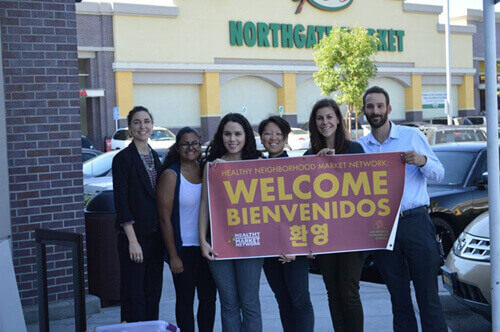
“The individual pieces have to come together to create a community oriented change.”
Groceryships is now in its third year of operation. By the end of 2017, it will have had 500 participants and have made an impact on more than 2,000 lives in South Los Angeles. Its presence can be seen onsite at hospitals, community clinics and schools. “We’ve been trying to figure out how to spread our program even further, and we’ve started a pilot program with Providence Healthcare to train their staff on our educational approach,” says Rizer. “Based on the impact of that, we believe we’ll have a program to train all sorts of health educators and school systems.”
Success stories
When a woman named Judith came to Groceryships in the summer of 2016, she was depressed after having been laid off from a meaningful job. As a single mother, Judith was also stressed in figuring out how to continue providing good food for her daughter.
After her first week in the Groceryships program, things began to look brighter as she mentioned how supported and uplifted she felt by her mentors and peers.
“We measure more than just food habits changing. We measure emotional health by tracking things like self-esteem, feelings of connectedness and resilience,” says Rizer. “Over and over again, we see a majority of our participants improve their self-esteem and quality of life through deep internal changes from our program.”
After graduating from her 20-week program at Groceryships, Judith went on to become a group leader, teaching more than 30 other women how to create healthier habits in cooking. She joined a larger organization called Esperanza, which has been training community health workers over the last 25 years on disease prevention, early childhood nutrition, and environmental health over the course of six months. Judith became certified from the Academy of Nutrition and Dietetics for cardiopulmonary resuscitation (CPR), which has since opened up many more doors for her career as a health advocate.
"We measure more than just food habits changing. We measure emotional health by tracking things like self-esteem, feelings of connectedness and resilience."
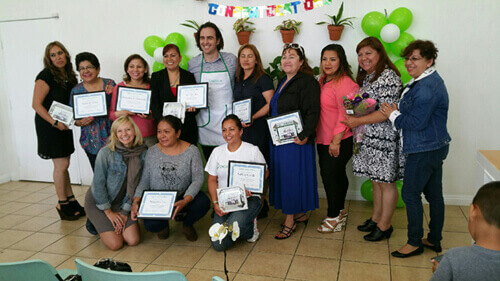
“Groceryships helped catapult her into the trajectory of a healthy career path, and this is only one success story out of many whose lives have been transformed,” says Rizer. Graduation from another 20-week program is fast approaching, and the participants are getting ready for their graduation potluck. “Graduation from our program is so important for them,” says Rizer, “because whether it’s their first graduation, or a pledge to follow a healthier lifestyle, you just see so much happiness, bonding and optimism. It’s really a heartwarming and meaningful event for all of us.”
Subscribe to the Reach Further Newsletter
Get inspiring stories in your inbox every month.

